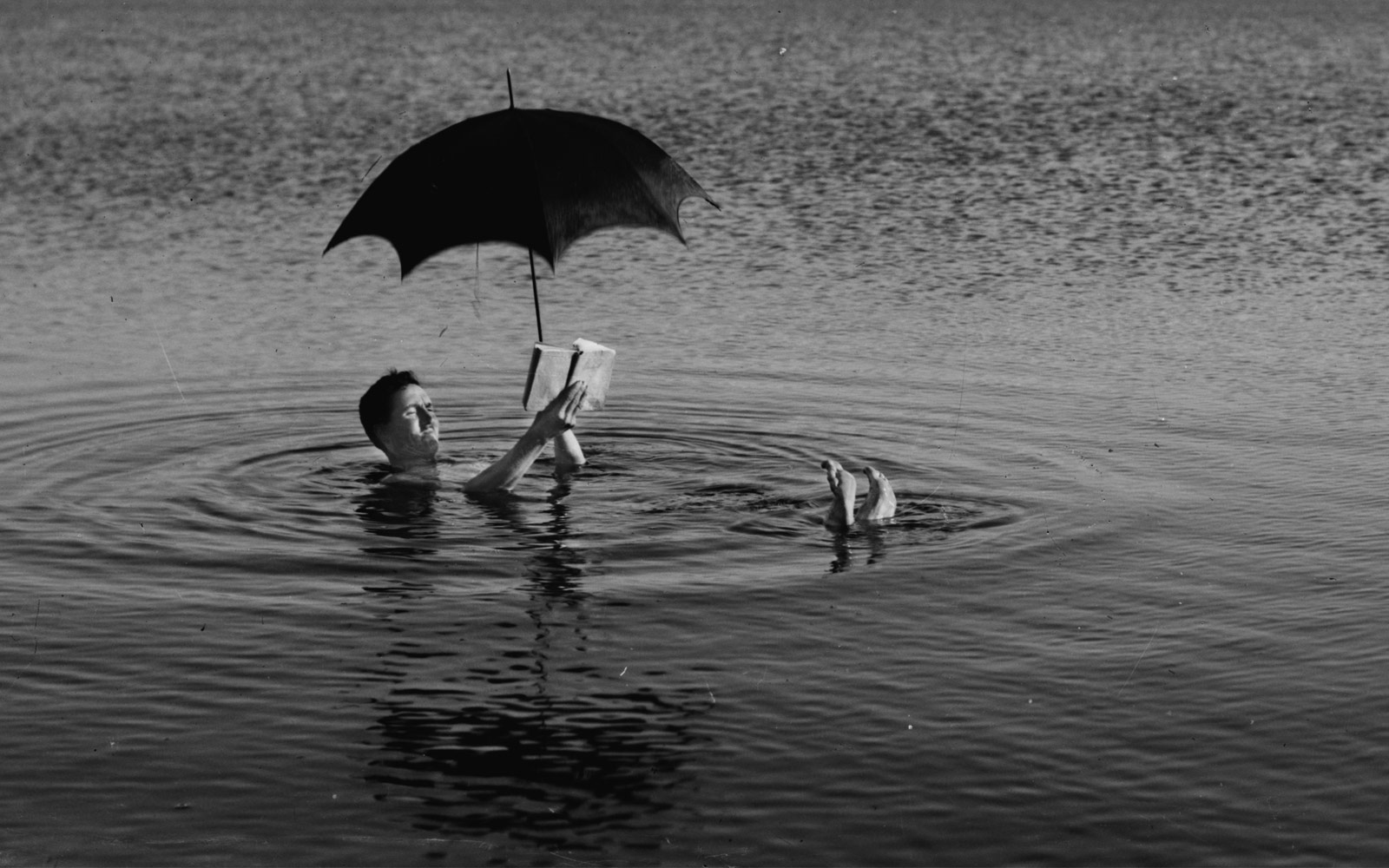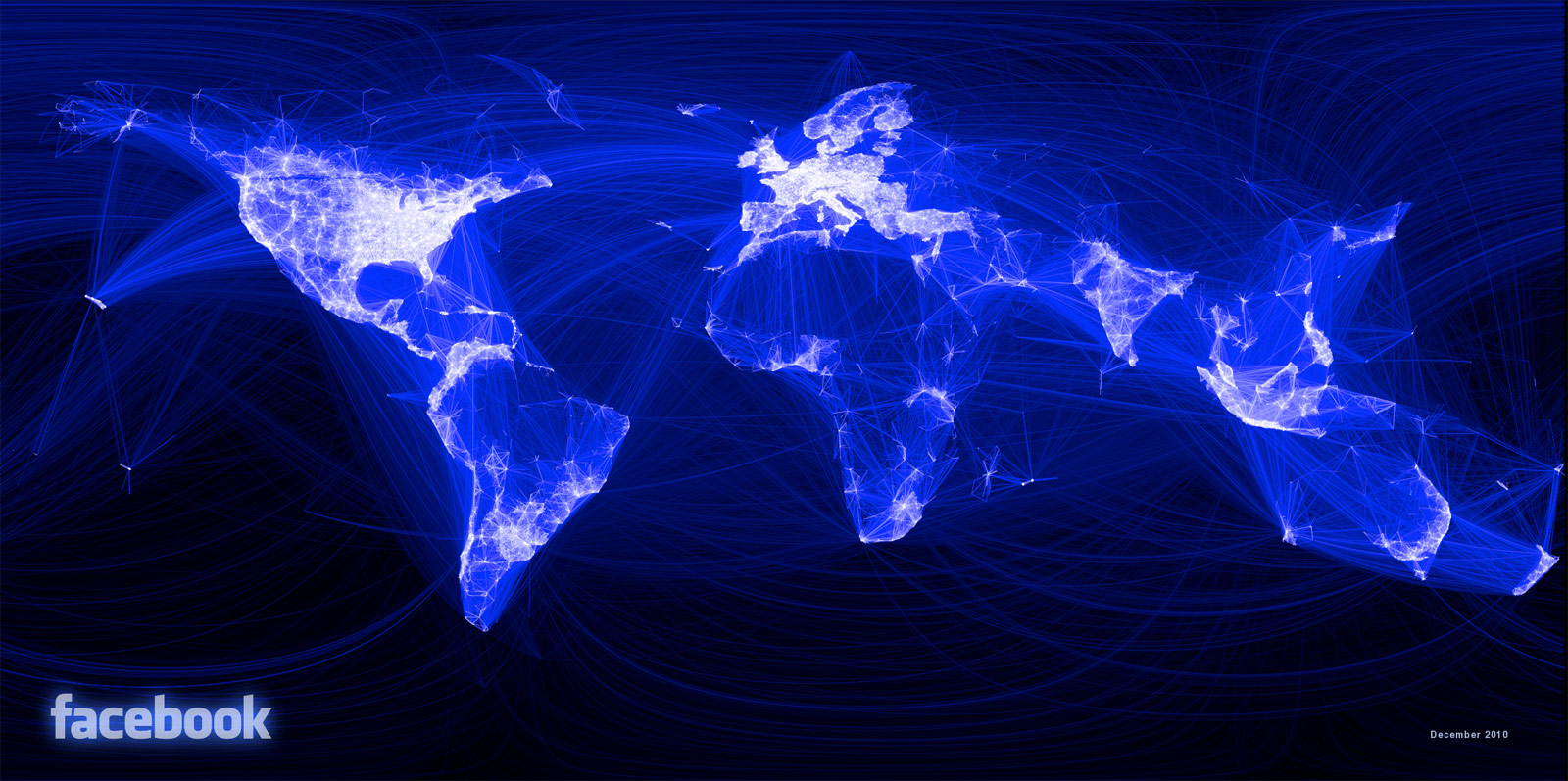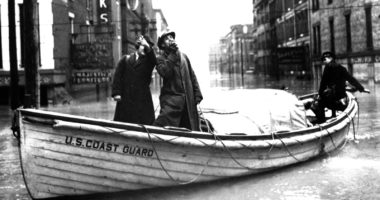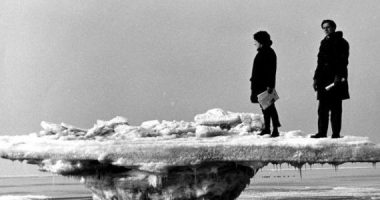
Man with book and sunshade floating in the Dead Sea | Library of Congress | No known restrictions on publication
The Anthropocene represents a radical change in perspective when observing human beings: the shift from a biological to a geological scale. This twist also means changes in terms of narrative. Whereas in the past, the dominant literary form was mythology, modern-age narratives have centred on the individual. But this new era calls for a broader focus.
In our imaginary of Siberia, a horizon of political exile and extreme survival, now in the 21st century a new narrative has to be added: that of seekers of mammoths and woolly rhinoceros. These mastodonic bodies have remained inaccessible, frozen for millennia, but rising temperatures in the Arctic have suddenly created a new gold rush: for ivory. Because these prehistoric animals have enormous tusks that are worth their weight in roubles. Or in yuan: the Chinese industry of miraculous remedies consists of magical powders that, as if by art of alchemy, are extracted from these antediluvian skeletons. Live elephants have legal protection, but in a landscape monopolised by permafrost, who will protect the heritage rights of extinct mammoths?
This is just one narrative example of the many now being offered by climate change. Polar bears are changing their hibernation habits and migrating, abandoning what have always been their ecosystems. We are seeing the appearance of viruses that have been frozen for 30,000 years. Air and ocean currents are beginning to change. We have started to call this the Anthropocene: a new phase in the history of the earth marked by human industrial activity. Some scientists date it from the birth of agriculture, but most favour the industrial revolution as its starting point. The Anthropocene comes after the Holocene, which lasted 11,500 years. It’s not just a word; it’s a radical change of perspective. I can only think of one term with a similar scope: Homo sapiens sapiens. But the Anthropocene considers the human being at a larger scale: not biological, but geological. Bearing in mind what we have done in the last two and a half centuries, are we still as tiny as we were before that? The Anthropocene is just a grain of sand in the planet’s timeline, but its intensity and its importance are right off the scale. If we are not mistaken.
Let’s say that we are not, that the Anthropocene is a reality, and that climate change is brutally altering our reality and our future. This means that mammoth hunters, polar bears, viruses that come to life, and atmospheric and marine currents form part of an incipient new narrative order. From a cultural viewpoint, humankind has perhaps experienced two major phases: the theocentric (or animistic, magical, polytheistic) and the anthropocentric (often Eurocentric, but with the human being as the measure of all things). The Anthropocene faces us with a third cultural phase, if climate change truly is ushering in a narrative twist.
Throughout the millennia in which magical thought reigned, the quintessential literary form was mythology. Lyric or epic, mass consumption was of myths. With Renaissance humanism and the Copernican revolution, the subject emerged as a place of enunciation and a field of exploration. Petrarchism expanded rapidly, rendering anachronistic the novel of chivalry, on the ashes of which Cervantes erected that polymorphic artefact we know as the “modern novel”. Montaigne became the theme of his body of work. Whereas Roldán and El Cid symbolised peoples, Othello and Hamlet only represented themselves. From the Argonauts to Robinson Crusoe, from Mount Olympus to Buddenbrooks, from the literature of the community to the literature of the individual or, at most, the bourgeois family: in literary terms, this might represent the shift from the myth to the logos. Since the mid-20th century, the poetry of the I and the novel peopled with characters have undergone periodic crises (or experienced a major crisis), coinciding with the move to the cinema and the television of the big stories with protagonists and antagonists, with recognisable star-system faces. Narratives are reluctant to abandon the character: they continue to consider it the stronghold of their modern essence. After Newton and Einstein and Hiroshima and 9/11 and Google Earth, we continue to grasp at the image of Vitruvian Man as at straws. But this image no longer represents us. On this map, the borders are defined. In our world, conversely, interoceanic links can be more powerful than the geological limits of continental masses.

World map created from Facebook connections | Paul Butler, Facebook
What will the narratives of the Anthropocene be like? What will literature be like once it is aware that the individual subject is no more than a node in a network? How will we tell the world after our realisation that we have drastically altered it? It is impossible to read the future, but we can observe some manifestations of the present. Two possible non-fiction trilogies of recent years, for example, very different but written in parallel, defend the same ambition of a necessarily international narrative, as though global studies were claiming their place in creative practice. I refer to the three books of essays, chronicle and travel in which writer Martín Caparrós addresses the crisis of the 21st century (Contra el cambio, Unaluna and El Hambre); or the three that sociologist Frédéric Martel devotes to the culture of our time (Mainstream, Global Gay and Smart). If we are seeing a shift from individual to complex authorship, the first example that comes to mind is that of encyclopaedias, which were traditionally written by teams made up of a few people; Wikipedia, conversely, is written by tens of thousands (it has some 70,000 regular editors). Collective intelligence is producing the real-time chronicle of our present, as well as versioning what we know about the past.
The other day, only half in jest, on my Facebook profile I published a status about the correspondences between the principal social networks and certain emotions and feelings that seem to be predominant in them. So, friendship and personal relations are featured on Facebook; jealousy and hate, on Twitter; desire, on Tinder; ambition on LinkedIn; and admiration and love, on Instagram. Haven’t we always associated these words with Shakespeare’s great characters? Are social networks writing the great emotional stories of our time? If they continue to grow and ramify, how on earth are we going to read them?
The problem is not so much one of production as of reading. In the Anthropocene, we have exponentially multiplied objects and conversations, contamination and knowledge. We call this constantly expanding, ungovernable archive Big Data. And the only readers that will be able to read it, artificial intelligences. Ours will necessarily be a partial reading, but it is no less valid, for all that. It is exactly 20 years since Deep Blue beat Gary Kasparov, but that doesn’t mean we’ve stopped playing chess.





Leave a comment